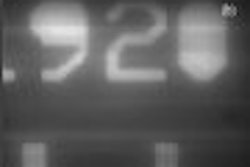
Breast imaging specialists at the 2007 RSNA meeting can look forward to detailed results from a three-year trial examining the role of ultrasound in breast cancer screening.
Dr. Wendie Berg, Ph.D., lead investigator for the American College of Radiology Imaging Network trial (ACRIN 6666) told AuntMinnie.com that the group hopes that the Chicago presentation will coincide with the publication of trial data before the end of 2007. The data is currently being reviewed for journal publication, according to an American College of Radiology (ACR) spokesperson.
At the ACR's 2007 fall meeting in Washington, DC, Dr. Etta Pisano, chair of the ACRIN breast committee, offered some preliminary findings from ACRIN 6666, most significantly that using ultrasound as an adjunct to mammography did find more cancers, but also led to a higher number of false positives.
For the study, 2,800 women at high risk for breast cancer underwent mammographic and sonographic exams. At the ACR meeting, Pisano said that 41 breast cancers were found in 40 women by a single modality or both. A dozen of those cancers were found with ultrasound only, leading 136 (5.2%) patients to continue on to biopsies for a suspicion of cancer. Of these patients, 8.5% were diagnosed with breast cancer.
Based on these results, the authors concluded that adding ultrasound to mammography will find approximately one to seven additional cancers per 1,000 high-risk women, but with an increase in false-positive results.
Since the trial began in March 2004, the researchers have released data along the way. In 2004, Berg's and colleagues reported that the combination of mammography, clinical breast exam, and MRI was more sensitive to malignancy than any other test alone or in combination with other modalities such as ultrasound. At the 2004 RSNA meeting, Berg and co-investigator Dr. Ellen Mendelson shared information on the reading abilities of ACRIN 6666 participants.
In one study, they found that the 35 study readers' sonographic interpretation skills improved if they did the exam themselves versus having it done by a technologist. Readers also benefited from feedback after they had read the cases, Berg said. Feedback was also important to improve interpretation skills of readers who looked at postoperative ultrasound images, Mendelson said.
By Shalmali Pal
AuntMinnie.com staff writer
October 8, 2007
Related Reading
Tumor type, breast profile determine value of mammo, US, and MR, January 6, 2005
Breast US readers need more practice with postop changes, December 22, 2004
Breast imagers fare better with hands-on approach to screening ultrasound, December 17, 2004
Copyright © 2007 AuntMinnie.com



















